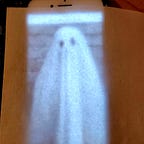The Art of Our Time: And How We Influence Its Creation.
We had a long transatlantic flight just recently, lots of time to sit and contemplate longer ideas. Staring through the window past the clouds, spotting the occasional light in the middle of the ocean, I got to thinking how microscopic we are in comparison to the earth and how monumental we make the most insignificant exchanges in conversation while the earth continues to bring beauty and chaos everywhere over and over. In one hundred years, I thought, few of us will be here, none of us fifty years after that. What will future generations think of us? We may deduce that our progeny will be too busy glued to a screen to consider the purpose or subtlety of their ancestors, that the only true indication of our existence will be explanatory data, usable history, or actual monetary value. But i believe this and future generations will continue to highlight human patterns faster than ever and expose the truth and fallacies by assembling the pieces of a giant antiquated puzzle. These awkward kids will break and discard the man made cycles that aren’t working and reveal the true unity between humans and their universe and the art that reflects that.
We had just left visiting parts of Germany and Italy this October, fresh on my mind was standing in front of massive paintings, most of them cloaked in religious imagery. The Alte Pinakothek in Munich, Like the Biblioteca Ambrosiana, the Santa Maria delle Grazie in Milan and the Uffizi in Florence house the most impressive works of European Renaissance and Medieval Art. Thousands of visual descriptions of a time when artists spoke through images in multiple layers, many of these conversations lost in time and others waiting for someone to stand and decipher their hidden purpose. Much of the art of that time that has made it to the present was both consciously and unconsciously selected and either visually combines the past, present and future or has come to represent the colors and patterns of the time. We know this now because paintings are static or dynamic, they either reveal or are created for decorative purposes never intending to be alive. The paintings in these enormous museums have slowly revealed the history of a culture and the secrecy surrounding their society and for that reason they are still relevant and continue to breathe.
The art of the past forty years has not fully defined itself, we don’t know yet what will make it past the next hundred years, because we don’t know what will best define our epoch. The art that makes it past the ages will speak of the past in the present, and the present in the future, or in the words of Kenneth Clark in describing a masterpiece: “… a confluence of memories and emotions forming a single idea and a power of recreating traditional forms so that they become expression of the artist’s own epoch and yet keep a relationship with the past.”
In our present time the art market has learned to blur the lines of credibility with philosophical descriptions and spiritual links to most anything that looks the part. Much of what is showcased in Art Fairs for example is designed to convince its public of a deeper meaning, when in fact there is nothing except the layer you see. It is a market fueled by a reductive understanding of art and a public that doesn’t trust its own intuition. This artificial art market has billions to convince you of it being alive when in fact it is a vending machine selling a lot of DEAD ART - using the occasional truth seeker or famed artist of ages past in hopes of convincing you of its cultural heritage and truth. It is art that is a product of careful strategy, gimmick and whim - the mainstay of this market. Will this art be recognized for what it is or will it define the art of a gullible epoch? A machine that sells you riddles of the universe when nothing is there differs from an artist that creates fast decorative pieces that look like a universe. One is selling you a candy covered lie, the other is telling you the truth, not pretending to be anything more than what it is. The only way to change this and not let the lie define our epoch is to read everything and seek to understand truths, otherwise art pretending to have a deep meaning will continue to exist and continue to represent EXACTLY who we are.
